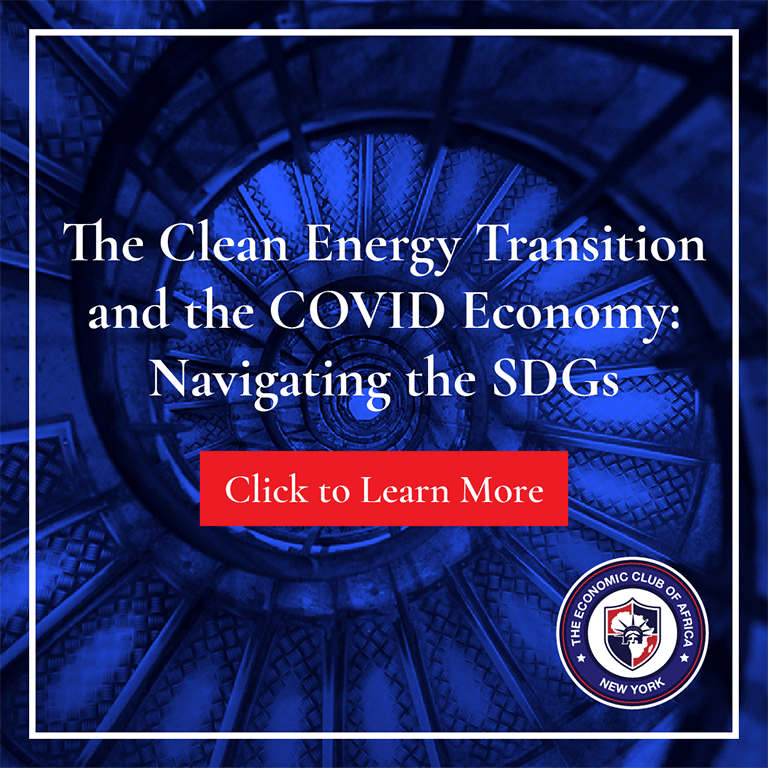The case for the transition towards sustainable energy systems has never been stronger. Global economic rebalancing, environmental concerns, and improvements in energy efficiency due to technological innovations – all combined – continue to drive the gradual decarbonization of the global fuel mix. Transitioning towards sustainable energy systems often involves optimizing multiple pathways.
The United Nations Sustainable Development Goal 7 (SDG 7) aims to “Ensure access to affordable, reliable, sustainable and modern energy for all.”[1] Indeed, improving access to affordable and clean energy for all, while reducing greenhouse gas emissions and the carbon footprint of the energy sector, is a laudable objective. However, the “energy trilemma” – a conceptual framework for understanding the tensions inherent in balancing energy security, affordability, and environmental sustainability — remains a central challenge for energy governance.
Sub-Saharan Africa is home to three-quarters of the global population without access to electricity.[2] Amid the COVID-19 crisis, the compounding effect of rapid population growth and pandemic-induced economic difficulties puts millions of Africans in an increasingly precarious situation. The public health crisis is pushing countries farther away from achieving universal electricity access. As governments continue to shift resources away from other sectors, in a bid to contain the virus, recent gains in energy poverty alleviation are being eroded. According to the International Energy Agency’s Stated Policies Scenario[3], released in October 2020, “In 2030, 50% of the global population without access is concentrated in seven countries – Democratic Republic of the Congo, Nigeria, Uganda, Pakistan, Tanzania, Niger and Sudan.”
The impacts of COVID-19 on the global energy system vary significantly. While reduced traffic on the roads in the immediate aftermath of the pandemic triggered a concomitant emissions improvement in the transportation sector, the health crisis also hampered the expansion of clean energy technologies and investments. Foreign direct investment remains a key driver of innovation. In addition to creating jobs and injecting capital into the local economy, its positive impacts on productivity gains – through supply chain linkages and technology transfers – remain desirable.
In a bid to address the climate crisis at home and abroad, US President Joe Biden is taking drastic steps and re-engaging the international community.[4] Among other efforts targeted at curbing greenhouse gas emissions and putting the country on a path to net-zero carbon emissions by 2050, President Biden recently introduced a proposal[5] aimed at building out clean energy infrastructure in the US.
Considering its huge resources, renewables are expected to play a major role in Africa’s energy economic future. However, a clean energy development path involves a wide variety of opportunities and costs. As the energy landscape continues to shift in the US and around the world, what policy incentives and pathways may help strengthen Africa’s adaptive capacity? To the extent that differing economic structures and policy thrusts influence energy use and production patterns, the debate on energy system transformation will remain on the front burner of the global energy investment and policy agenda for years to come. It goes without saying that optimal outcomes will depend on how structural, efficiency, and jurisdictional nuances are balanced.
The pandemic has disproportionately affected micro-, small and medium enterprises (MSMEs). Due to their largely informal nature in Africa, MSMEs are among the worst hit financially. Economic recovery in many jurisdictions often depend on the ability of MSMEs to survive and thrive. As countries strategically position clean energy as the driver of future growth across the energy value chain, it is important to ensure MSMEs are not left behind. The MSME sector is key to economic and industrial revival.
African countries must ponder policy measures capable of tilting the incentive structure in favor of MSMEs, research institutions, investors, and other players in the entrepreneurial ecosystem. This will be important for localizing the SDGs; strategies targeted at moving the needle must be adapted to the specific contexts and needs of different cities, regions, and countries.
[1] https://sdgs.un.org/goals/goal7
[2] https://www.iea.org/reports/sdg7-data-and-projections/access-to-electricity
[3] A scenario where today’s current and announced policies continue


